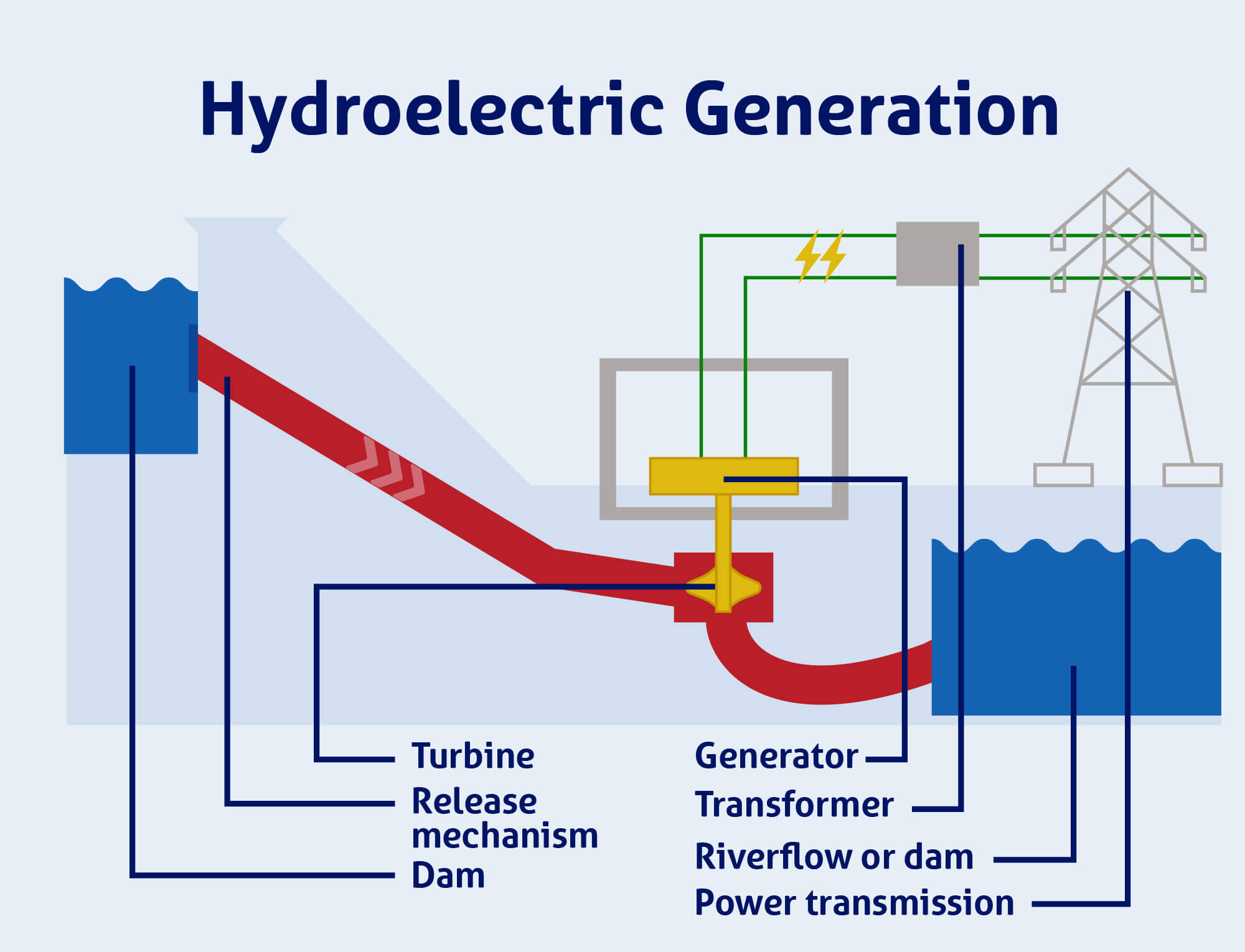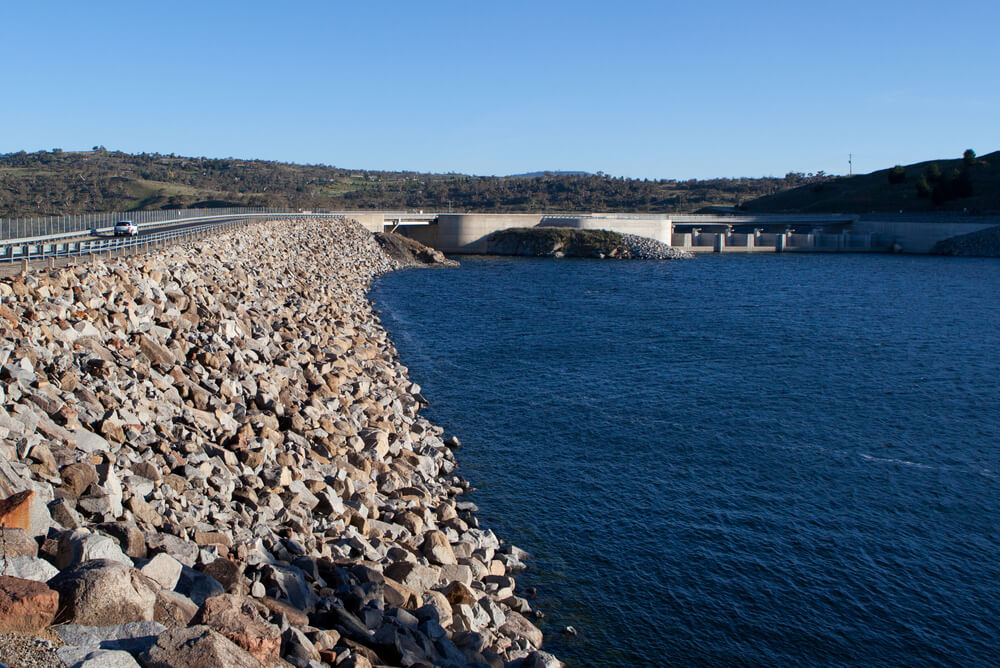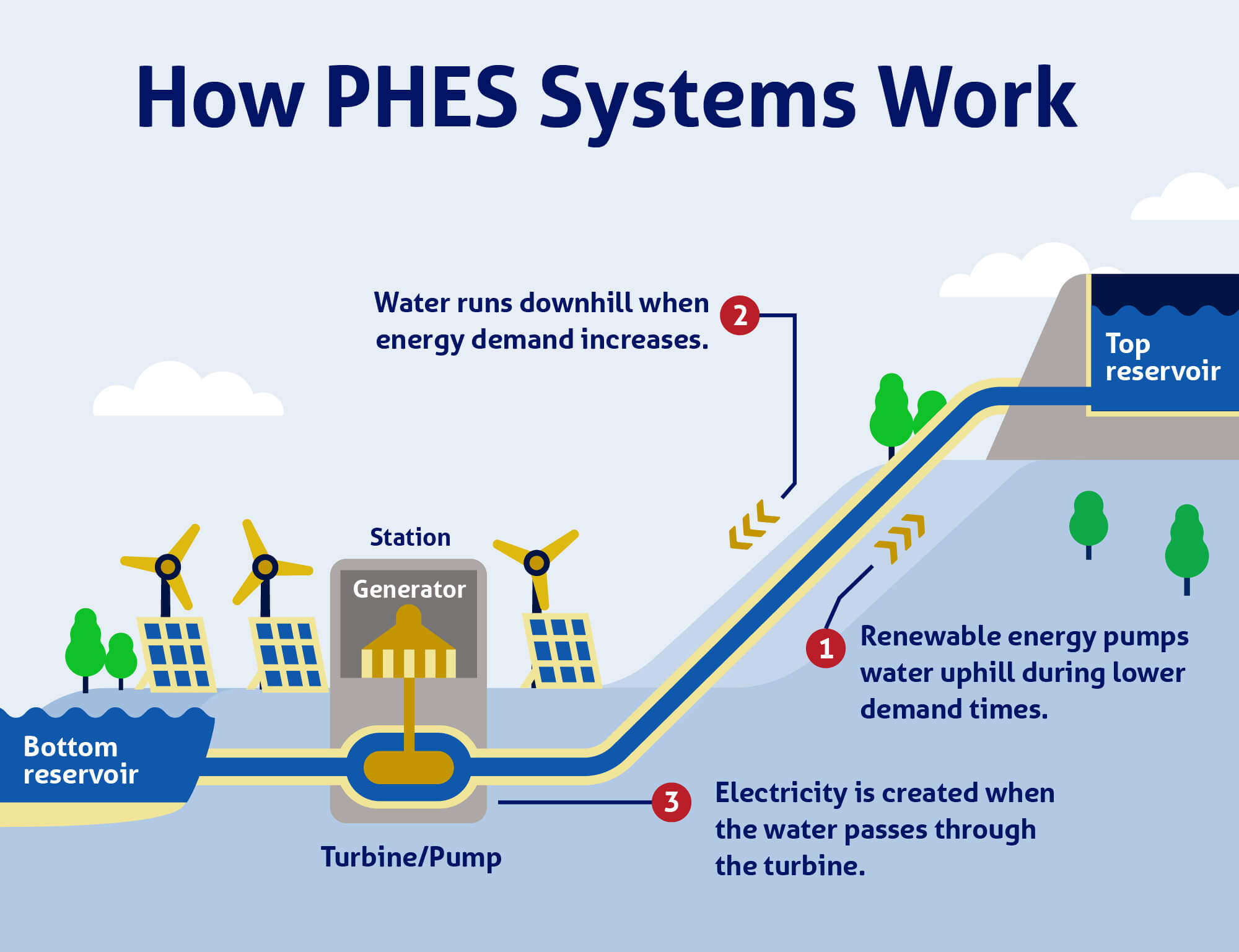When it comes to energy, chances are you have heard about hydroelectricity. But how does this type of energy technology work and how common is it in Australia?
Hydroelectricity, also known as hydropower or hydro energy, is a type of renewable energy that converts the energy of moving water into electricity. Hydroelectric power is created when water from reservoirs, rivers, waterfalls is channelled through water turbines. More than 160 countries generate some level of their electricity through hydropower.1
In 2020, hydroelectricity was one of Australia’s top three sources of renewable energy (along with solar and wind).2 Six per cent of all renewable energy generated in this period was through hydro.2
Hydroelectricity is generated when a flow of water – usually from hydroelectric dams – is passed through turbines that can generate electricity. When the water moves through the turbine blades, it causes them to rotate, allowing the generator to convert the motion into electricity (hydropower).
Step-by-step guide of how hydroelectric power generation works:
See how it works in the hydroelectricity diagram below.

Source: AER
Like natural gas, solar power or even nuclear power, hydroelectricity is another energy source that can power homes and businesses across Australia. So essentially, if your home or business uses any amount of electricity, there’s a chance it’s been generated through hydropower.
According to the government’s Renewable Energy Agency, there are more than 120 hydroelectricity power plants in Australia, which generate between 5 and 7% of the country’s total electricity supply.4 There are both big and small hydro plants in Australia, capable of producing a combined 7,800 megawatts (MW) of electricity.1
Most of Australia’s hydroelectricity power stations are mainly located in the south east, where rainfall and elevation are the highest. However, hydroelectricity schemes are currently in New South Wales, Tasmania, Queensland, South Australia, Victoria and Western Australia.
The biggest plant is the Snowy Mountains Hydro-Electric Scheme which is located in New South Wales. It has an installed capacity of 3,800MW and includes 16 major dams, 5 above-ground power stations, 2 underground power stations and nearly 150km of trans-mountain tunnels.1 Around 50% of Australia’s total hydropower is generated by the Snowy Mountains Scheme.1

Construction has also begun on a new project at the Snowy Mountains, which will connect two existing dams, provide an additional 2,000MW of capacity and 350,000 megawatt-hours (MWh) of stored capacity.3 This could power around 3 million homes a week when complete,5 with power to start being generated from 2025.6
Did you know that most of Tasmania’s electricity is generated through hydroelectricity generation?1 According to Geoscience Australia, the Tasmanian integrated hydropower scheme generates more than 2,600MW of electricity from 6 major water catchments, 50 major dams and lakes and 29 power stations.1
PHES systems are an important part of hydroelectricity production, as they allow excess electricity to be stored and used when electricity demand is high. They’re similar to solar storage batteries, which allow you to store excess electricity your solar panels produce and use it when it’s most convenient for you.
For the first time in 37 years, in 2021, The Australian Renewable Energy Agency announced funding for a new PHES system – which will join 3 major PHES systems that already feed electricity to the national electricity grid.1 The new system will be located at the old Kidston Gold Mine in North Queensland and will also support wind and solar energy.
The existing operations PHES plants are Wivenhoe, Tumut 3 and the Shoalhaven Scheme.7
While hydroelectricity itself is an important renewable energy source of electricity production, PHES systems are just as important. They work in allowing electricity to be stored and used when it’s needed most. Here’s how they work.

Today, being a renewable type of clean energy that doesn’t rely on fossil fuels, provides a multitude of benefits to electricity generation. Through utilising hydropower instead of other fuel sources we can see benefits that include:
However, like anything, hydropower does have some disadvantages like high start-up costs, the dependence on rainfall to be successful and the time it takes to pump water back to the upper reservoir.
Unfortunately, in Australia, if you are connected to the main electricity grid (as most households are), you will not be able to control the source of the electricity that is distributed to you. However, many electricity providers still allow you to select a green option plan. While this plan doesn’t mean you will receive green energy directly, it does mean the provider will purchase electricity from green energy solutions on your behalf. It generally means that the retailer will increase the proportion of renewable vs non-renewable energy which they supply to their customers.
There are three types of hydro power stations in Australia, each which operates slightly differently. The most common are impoundment plants, which store water and release it to generate electricity.
Diversion plants force water to flow through canals to produce electricity. Similar to impoundment plants, electricity is generated when the water hits the turbine.
Lastly, pumped storage plants work like a battery and allow water to be stored and used as an electricity supply when electricity demand is higher (PHES systems). With this option, hydroelectricity can be stored.
As of 2020, hydroelectricity was the third largest source of renewable energy in Australia. At 6% of total generation, it’s behind solar (9%) and wind (9%).2
It would be extremely difficult to build your own hydroelectricity plant at your home using water power, especially if you didn’t have a lot of land area or access to a dam, creek or other type of water. However, you may be able to invest in other types of renewable electricity, such as solar power.
While hydroelectricity doesn’t generate pollution, hydropower plants and facilities can have negative impacts on the environment. For example, building a new plant may cause damage or destruction to natural ecosystems, change water temperatures and impact wildlife. Similarly, harvesting the materials used to build a plant can produce emissions, which may affect the environment.9
Hydroelectricity is considered a renewable energy source because it relies on the natural water cycle to generate electricity. While it does use turbines to convert energy, at its core, no fossil fuels are burnt to produce hydropower.
If you’re looking for a new electricity plan or want one that offers green options, we’re here to help. Our electricity comparison service allows you to compare a range of plans and providers in minutes. It’s free and easy to use, so what are you waiting for?
